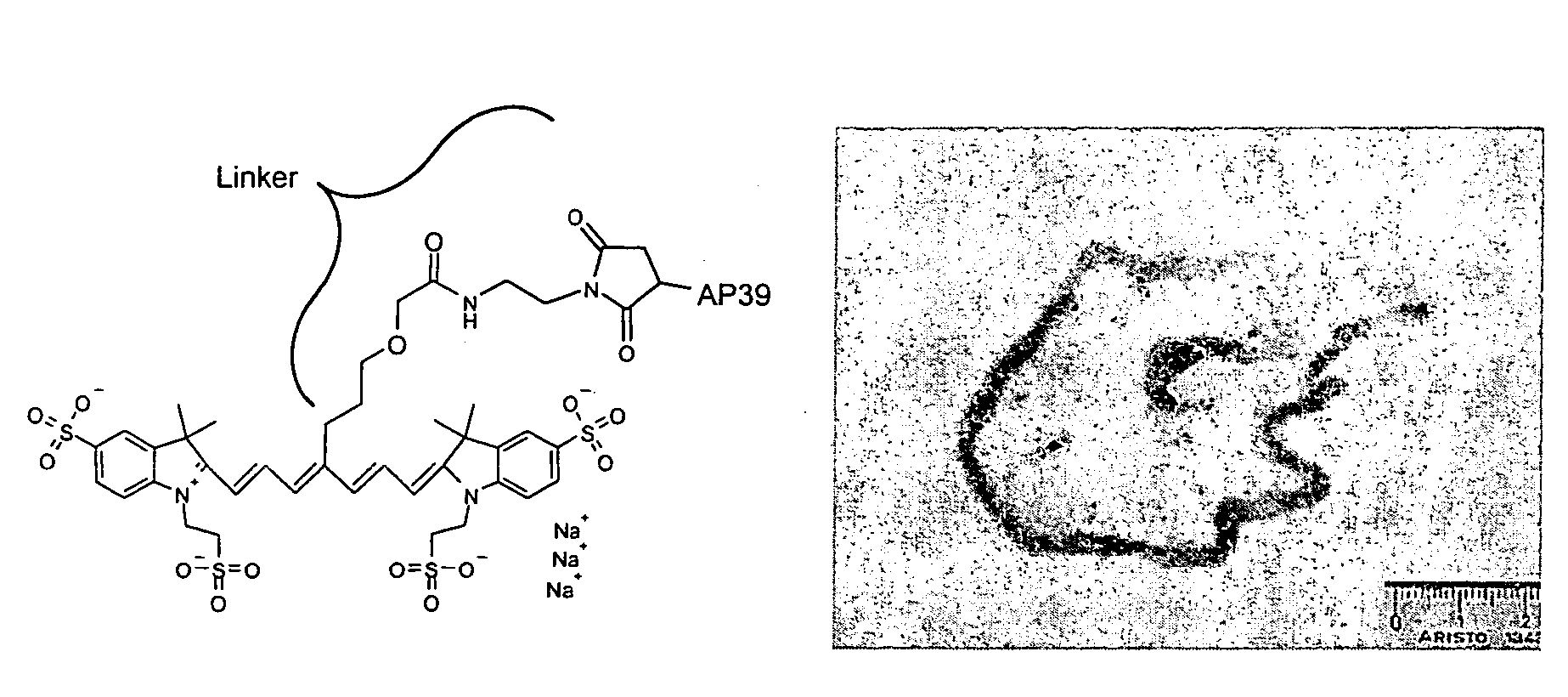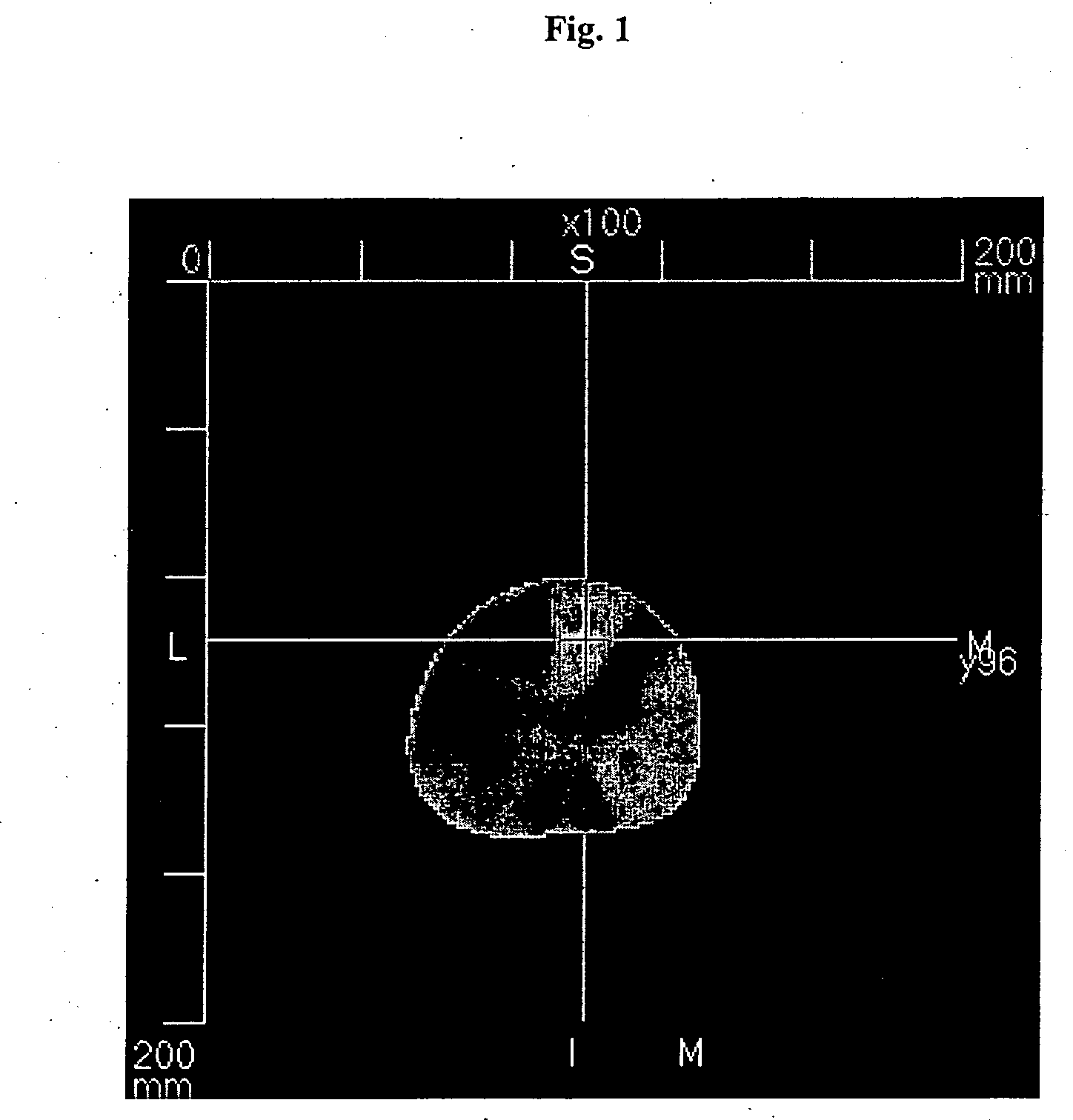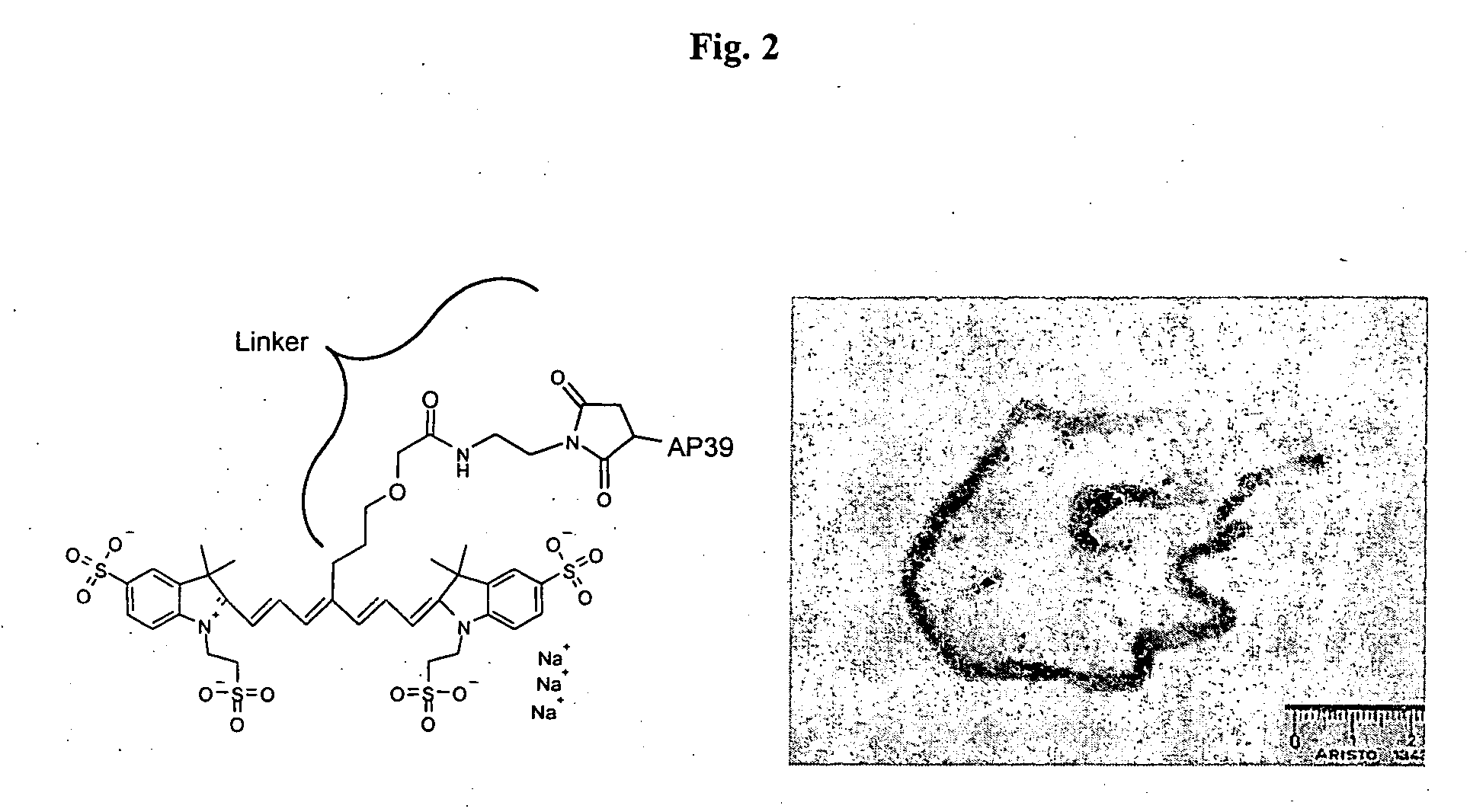Use of cyanine dyes for the diagnosis of proliferative diseases
a technology of proliferative diseases and cyanine dyes, which is applied in the field of use of cyanine dyes for the diagnosis of proliferative diseases, can solve the problems of mammography being associated with a significant and cumulative risk of radiation exposure, cancer financial burden, and affecting the diagnosis of cancer,
- Summary
- Abstract
- Description
- Claims
- Application Information
AI Technical Summary
Benefits of technology
Problems solved by technology
Method used
Image
Examples
examples
Optical Mammography after i.v. Injection of SF64 in a Female Patient with Invasive Breast Cancer in the Right Breast.
[0046] A dose of 0.1 mg / kg body weight of SF64 was, after dilution of the lyophilisate with 0.9% normal saline, injected intravenously via an indwelling forearm canula. The patient was imaged with an optical computed tomographic laser mammography device in a prone position with her breast hanging freely into the imaging chamber, being surrounded by air. Image acquisition was started
[0047] 1 hour 10 minutes after i.v. injection of SF64, and image reconstruction was performed using the fluorescence mode, thus almost exclusively showing the fluorescence signal of SF64. The contrast dye did accumulate in this invasive breast cancer, which is represented in the image by the bright spot. This led to the marked fluorescence signal of SF64 in the image.
Determination of Fluorescence Quantum Yield of Several Tricarbocyanine Dyes
[0048] Compounds 6-4, 5-36, 5-29. 5-41, NIR9...
PUM
| Property | Measurement | Unit |
|---|---|---|
| Dimensionless property | aaaaa | aaaaa |
| Volume | aaaaa | aaaaa |
| Nanoscale particle size | aaaaa | aaaaa |
Abstract
Description
Claims
Application Information
 Login to View More
Login to View More - R&D
- Intellectual Property
- Life Sciences
- Materials
- Tech Scout
- Unparalleled Data Quality
- Higher Quality Content
- 60% Fewer Hallucinations
Browse by: Latest US Patents, China's latest patents, Technical Efficacy Thesaurus, Application Domain, Technology Topic, Popular Technical Reports.
© 2025 PatSnap. All rights reserved.Legal|Privacy policy|Modern Slavery Act Transparency Statement|Sitemap|About US| Contact US: help@patsnap.com



